Daejeon, South Korea – Saturday, June 11th, 2011
Packing up from Seoul early in the morning, today’s rail journey would involve stops in two of South Korea’s largest centrally-located cities on my way south to arrive at the historic city of Gyeongju that evening. Relying on trains and buses makes planning and scheduling a bit of a risky proposition, especially not being able to read or speak the local language. I would do my best. The first stop that morning was in Daejeon, a city known for its tech-based industry. Daejeon also hosted Expo ’93, a specialized expo that takes place in years between the larger World Expos. While the expo only lasted for three months in 1993, a number of structures and attractions were still present in the Expo Science Park which could be explored today.
The mascot for Expo ’93 was this lumpy, mushroom-like alien genie known as Twinkle, the Dream Being, which were also featured as part of an expo-related kid’s television program that aired in South Korea and the United States, with Tress MacNeille voicing the yellow genie in the U.S. version.
In Korean, Twinkle is known as Kumdori, and as part of the Expo, Kumdori had their own family theme park named after them, Kumdori Land.
Unlike most of the other parks I would visit in South Korea, Kumdori Land was fairly empty of visitors, despite visiting on a Saturday. The park and expo site is somewhat removed from the city center itself and hasn’t appeared to have seen any major changes since it was established as a legacy park in 1994, which could account for the loss of popularity among the locals. Whatever the reason, the park was clearly already on the downswing, as it permanently closed just a year after my visit in 2012. (If I didn’t always have the best luck with getting to all the upcoming parks and attractions I had hoped for across Asia that year, Kumdori Land was one of several examples of catching an outgoing park or attraction in its final season(s), arguably the more valuable accomplishment.)
A map of Kumdori Land. It’s not a large park.
Twinkle and the rest of the cast of characters can be found throughout the park, as sculptures, in murals, and even as oddly-proportioned costumed characters (which were seemingly the most popular aspect of the park on this day). I have no idea how well known these characters still are in Korea, or if Kumdori Land was their last major point of reference for most children.
Kumdori Land is home to a fairly typical collection of flat rides that one can find at just about any Korean amusement park.
A Ghost House was closed.
This artificial hill is apparently used for grass sledding, though it was obviously closed here. I’d seen a couple of these in Korean parks, but hadn’t actually tried one. I might still have more opportunities in the future.
The Ferris Wheel looked to offer some good views of the park.
Unfortunately the windows were either an impossibly opaque plexiglass, or a wire mesh that made attempting to take pictures through almost (but not completely) impossible.
Kumdori Land is also home to three coasters, all supplied by Vekoma and opened in 1993, making the park a somewhat unique snapshot of that particular manufacturer at that stage in its development in the early 90’s.
Working from smallest to largest, the most basic was Kumdori Coaster, a basic small 207m model Vekoma junior coaster that can be found at parks around the world.
This one was located in the shadow of its much larger brother, and had seemingly gone feral, with lots of wild grasses and flowers growing beneath it as if plopped down in the middle of a meadow.
The next coaster was located just a bit further down the pathway, named Space Adventure.
While it was yet another junior coaster model, this one had a completely custom layout with most of it taking place in a large dark tent, an attempt at creating a Space Mountain style ride on a tight budget. This was actually the fifth Vekoma-made Space Mountain-style indoor family coaster I’d experience during my Asia travels, not counting Vekoma’s work on the actual Space Mountain at Hong Kong Disneyland.
It uses the same trains found on the Laser Blaster at Window on China Theme Park at Taiwan, which opened the same year, and even includes the same name printed on the fiberglass.
The lift hill however takes place outside the main tent in broad daylight. It uses an unconventional split lift with a flat 90 degree turn between the two segments.
The rest of the ride had some decent forces and direction changes, although with zero special effects and stuffed into a stuffy tent, it was still the worst of the Space Mountain derivatives I’d experience.
Of course the main reason for my detour to Daejeon, the Expo ’93 site, and Kumdori Land is the park’s largest attraction, Black Hole Express, a custom Vekoma MK-1200 multi-looping roller coaster.
Vekoma only fully designed six of these custom looping coasters between the 1980’s and 1990’s, and of that limited collection, Black Hole Express was by far the largest, and, most likely, the best. Topping out at an impressive 170 feet and with five inversions across 3,600 feet of track, Black Hole Express completely dominates the small park, covering nearly half the area with its sprawling layout.
Originally named “Scream Machine” (the same name given another multi-looping coaster Vekoma worked on for the Expo ’86 in Vancouver), the ride was later renamed “Horror Express” (a rather aggressively mismatched name given the park’s whimsical namesake mascots) before it finally landed on the more theme-appropriate Black Hole Express moniker.
The layout begins with a 170 foot lift hill into a spiraling helix drop reaching close to 60 miles per hour. While it forgoes having one large, steep drop with that full height, the helix does have the benefit of prolonging the acceleration to top speed, giving riders longer to appreciate the sense of increasing speed and motion blur before ramping up into the first element.
The first two elements are a back-to-back set of vertical loops. While I don’t have a statistic on these inversions, I’m pretty sure they would constitute the largest double loop combo in the world.
With the helix drop straight into two massive vertical loops, the first part of the ride is an exercise in prolonged positive G-forces. A small airtime pop up into a midcourse block brake is a welcome bit of contrast.
If the first part of the layout was all about experiencing a steady progression of high-speed, high-altitude elements with a little bit of grey-out vision, then even though the brakes scrub off a lot of speed, it’s after this point where Black Hole Express has its best tricks yet. A straight dip down leads into a lone half of a sidewinder element, the exit of the loop dropping down into a surprise underground tunnel.
The coaster then pops out of the tunnel for a brief low speed hill with a curving dive before dropping into another underground tunnel. Basically the signature move on Tremors at Silverwood, a full six years before Tremors. After it emerges from the second tunnel it immediately enters another set of inversions, a double corkscrew.
While a fairly traditional maneuver, this double corkscrew was made unique by the presence of a large concrete retaining wall built in an undulating curve that follows the sine curve of the corkscrew track. The ingenious result was a continual near-miss fly-by effect for the entire length of the double corkscrew, the wall always curving away with just enough clearance right at the moment it feels like the coaster car is about to sideswipe the concrete.
Up until this point Black Hole Express reminds me of a longer, alternate universe Vekoma version of Tennessee Tornado, with the tunnels and terrain integration mixed with the oversized inversions. That feeling is reinforced by the final maneuvers, a rightward banked turn popping up into the brakes.
Overall I’d probably rate Black Hole Express as Vekoma’s best non-Disney coaster built in the 20th century. Obviously the competition given that criteria isn’t particularly strong, but it’s also not an insignificant achievement for a twenty year period of some 150+ installations.
The ride operators were even kind enough to allow me to take my camera on the ride. So I did, a couple of times, for both photos and video.
After sitting idle for several years, both the Space Adventure and Black Hole Express coasters have been relocated to a new park in Indonesia, although the Space Adventure only reopened in 2019 and no word on when the Black Hole Express might ever reopen; hopefully with tunnels and corkscrew wall included.
I’m glad I got to see Kumdori Land before it closed for good. 1993 is still relatively recent by theme park standards and it’s sad that this park, whatever its limits and faults, couldn’t have made it to its 20th anniversary, especially being home to what had been the country’s largest ever steel coaster. Still… life moves on, and I had a train to catch. Next stop, Daegu.






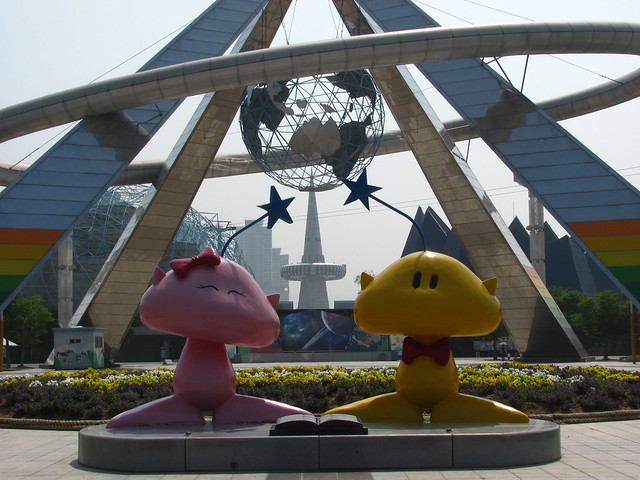

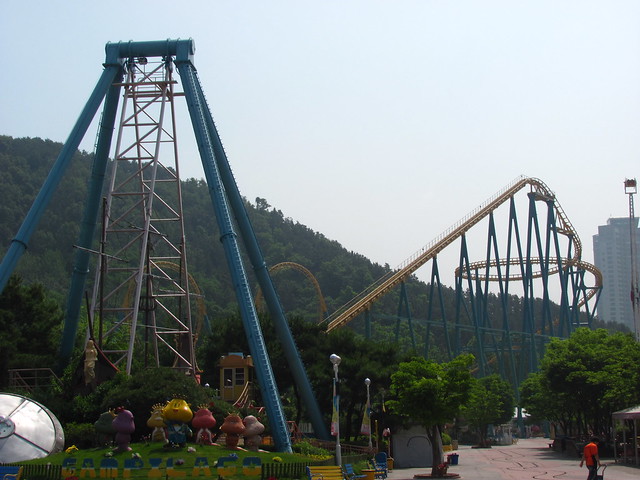





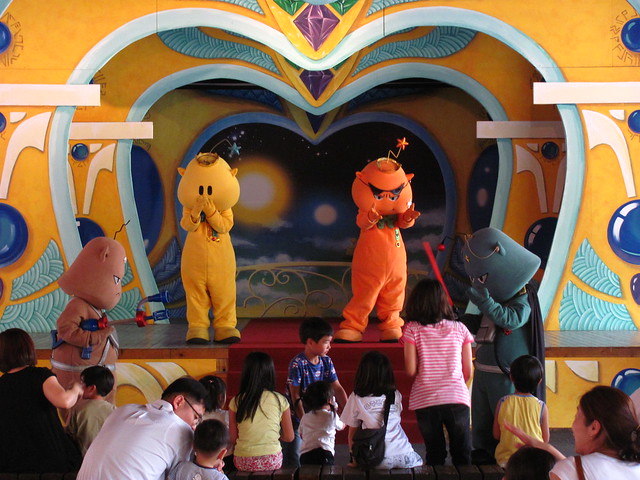
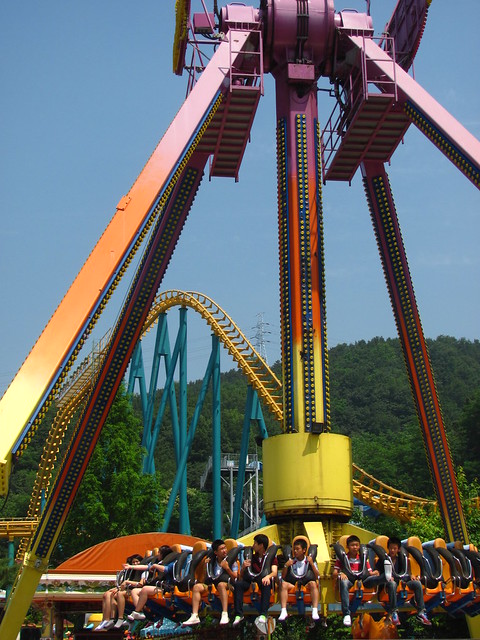
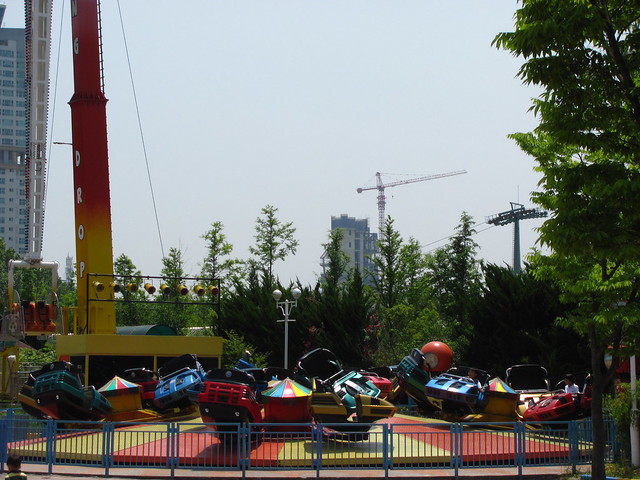











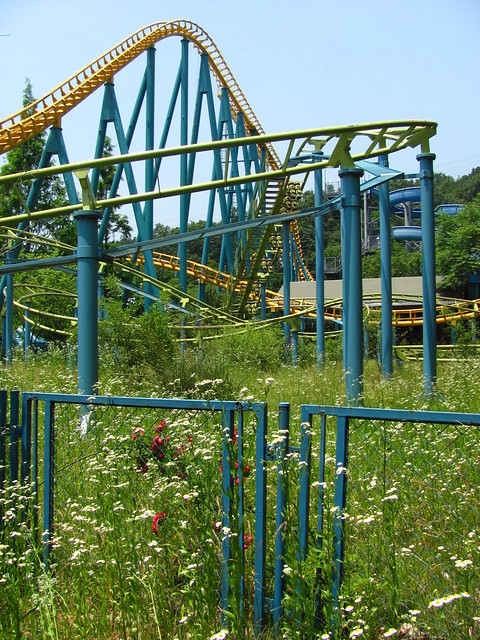













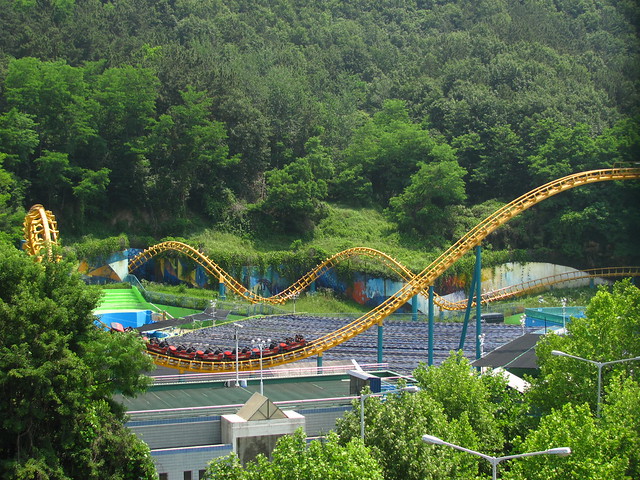








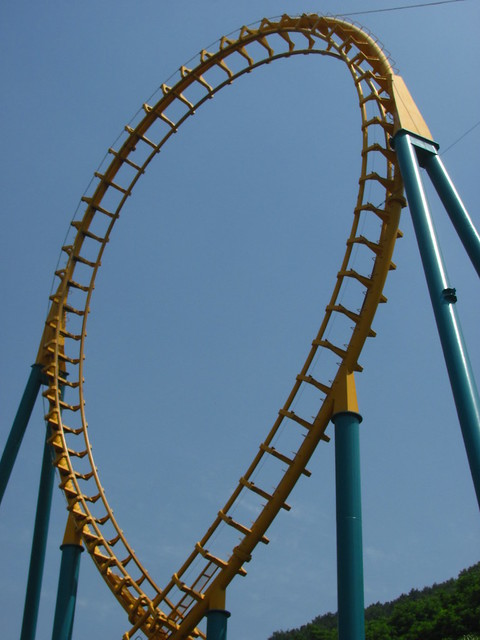





















Comments